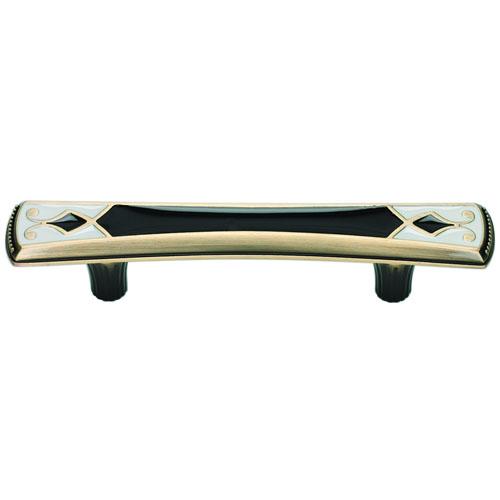When designing or renovating a kitchen, bathroom, or storage space, most people focus on big elements like paint colors, countertops, or flooring. However, it’s often the small details that make the biggest difference. Cabinet hardware those subtle knobs, pulls, and handles plays a vital role in defining your space’s personality. The right choices can transform ordinary cabinetry into a polished, cohesive design that reflects your style.
Before diving into finishes and shapes, it’s important to understand how door and drawer styles influence your choices. Selecting the right cabinet handles and pulls isn’t just about function; it’s about creating visual balance and harmony. Whether you’re upgrading a single room or designing a new kitchen from scratch, matching your hardware with cabinet design ensures your space looks intentional and thoughtfully curated.
Understanding Cabinet Door and Drawer Styles
Every cabinet door and drawer style has its own design language. Shaker cabinets, with their clean, simple frames, lend themselves to both classic and contemporary looks. Flat-panel or slab doors, on the other hand, exude modern minimalism, while raised-panel designs offer depth and traditional charm. Beadboard styles bring a rustic or farmhouse appeal, often used to add warmth and texture to cozy spaces.
Knowing these distinctions helps you choose hardware that enhances rather than competes with the cabinetry. For example, ornate handles can overwhelm a minimalist cabinet, while simple bar pulls might look out of place on intricately detailed doors. Think of your hardware as jewelry it should complement, not distract from, the overall outfit.
Choosing Hardware Shapes and Sizes to Complement Cabinet Design
The shape and size of your hardware should align with the style and proportions of your cabinetry. Linear or angular hardware pairs beautifully with modern, flat-panel cabinets, reinforcing clean lines and symmetry. For traditional designs, curved or decorative pieces can emphasize craftsmanship and elegance.
Proportion is equally important. Oversized handles on small drawers can feel clumsy, while tiny knobs on large cabinet doors may appear lost. As a rule of thumb, the hardware should be about one-third the width of the drawer or door for visual balance.
Considering Finishes for a Cohesive Look
Once the style and shape are chosen, the next step is selecting a finish. Matte black and brushed nickel are modern favorites, offering versatility and sophistication. Polished chrome works well in contemporary kitchens, reflecting light for a sleek, clean look. For a touch of warmth, brass and bronze finishes complement neutral or white cabinetry beautifully.
When mixing finishes, stick to two at most within a single space. For instance, you can pair brushed brass hardware with stainless-steel appliances by repeating a common accent color elsewhere in the room. The goal is to maintain cohesion without making the space feel overly matched or sterile.
Function Meets Aesthetics: Practical Considerations
While design is important, function should never be overlooked. Hardware should be comfortable to grip, especially for frequently used drawers or cabinets. Smooth edges, appropriate spacing, and sturdy materials make a big difference in daily usability.
Consider where the hardware will be installed kitchens and bathrooms are high-traffic areas that experience moisture, oils, and constant handling. In such spaces, opt for durable materials like solid brass, stainless steel, or zinc alloys with protective coatings. Longevity and ease of maintenance are key aspects that ensure your investment holds up over time.
Style Pairing Examples
Let’s look at a few popular combinations that showcase balance between cabinet design and hardware style. Shaker cabinets pair wonderfully with matte black bar pulls for a transitional look that bridges classic and modern aesthetics. Flat-panel drawers often shine with streamlined chrome handles, creating a polished, contemporary feel. For a vintage touch, beadboard doors and antique brass knobs are a timeless pairing that adds warmth and personality.
Consistency is crucial. Mixing knob styles is fine as long as they share a common material or finish. For instance, you might use long handles on drawers and matching round knobs on doors. This approach creates subtle variety without breaking visual harmony. In the middle of your design process, remember how much cohesion and texture can come from thoughtfully chosen cabinet handles and pulls that complement both the cabinetry and surrounding décor.
When to Customize Your Hardware
Sometimes, off-the-shelf hardware just doesn’t achieve the look or functionality you need. Custom hardware allows you to tailor the size, finish, and design to perfectly suit your cabinetry. This approach is especially useful for built-in furniture or bespoke kitchens, where every detail is designed with purpose.
Custom finishes can also tie together other elements in your space, like matching faucet tones or lighting fixtures. While custom pieces can be more expensive, they often add a sense of luxury and permanence that’s worth the investment.
Conclusion
Matching cabinet hardware with door and drawer styles is about more than just appearance it’s about creating a balanced, user-friendly space that feels complete. From sleek modern pulls to ornate vintage knobs, every choice tells a story about your design vision.
By understanding your cabinet style, selecting the right finish, and considering both form and function, you can ensure that every detail contributes to a cohesive whole. Think of hardware as the final polish on your space the small yet powerful detail that brings your cabinetry to life.














